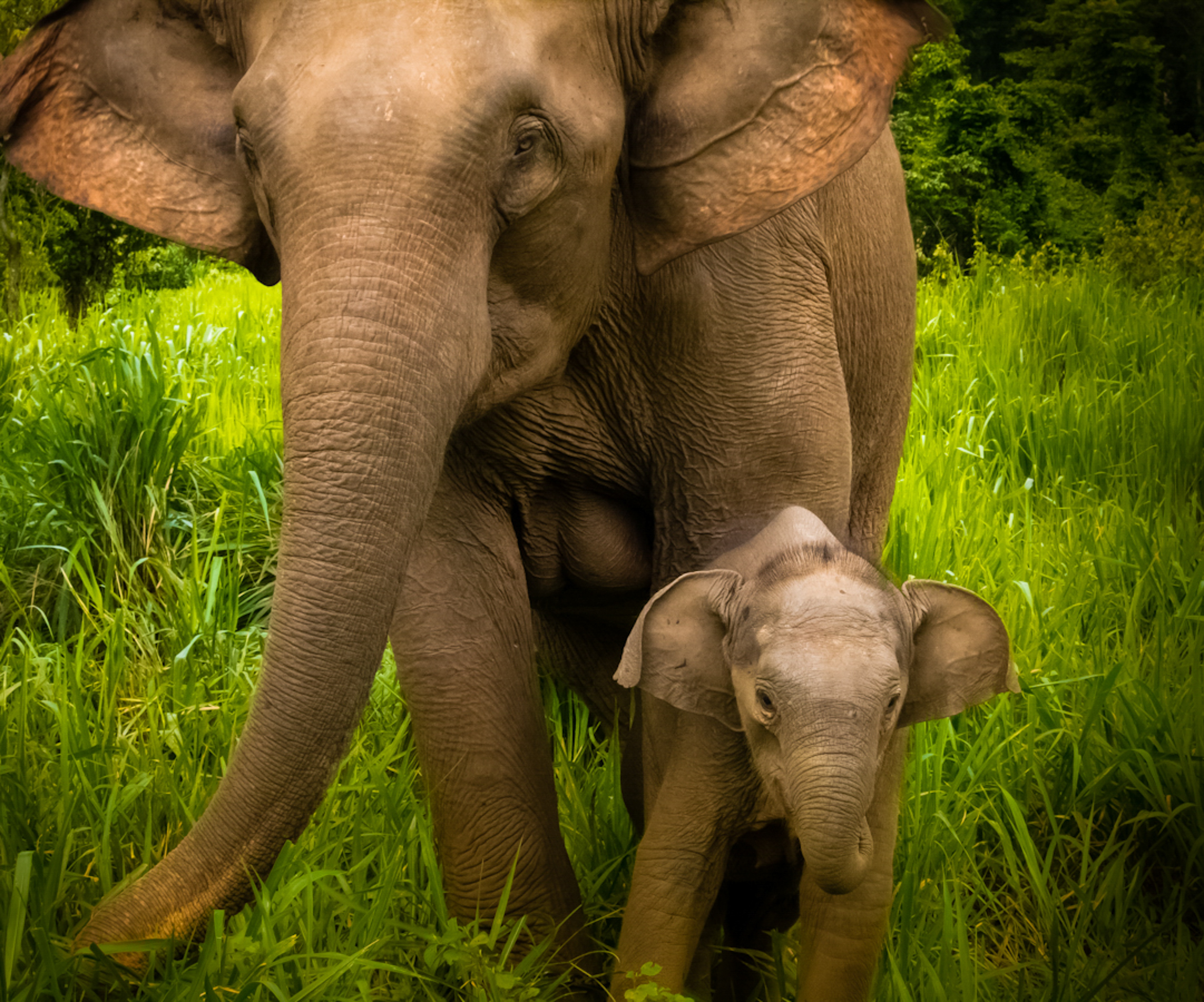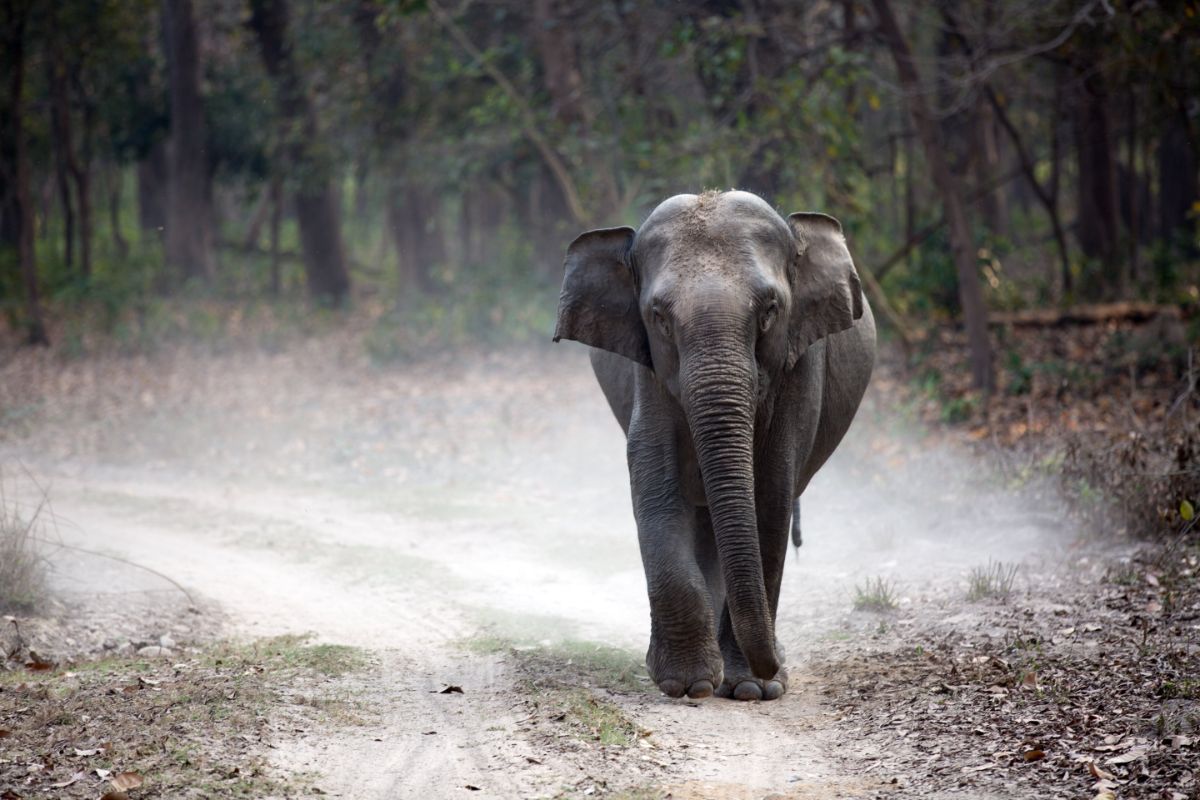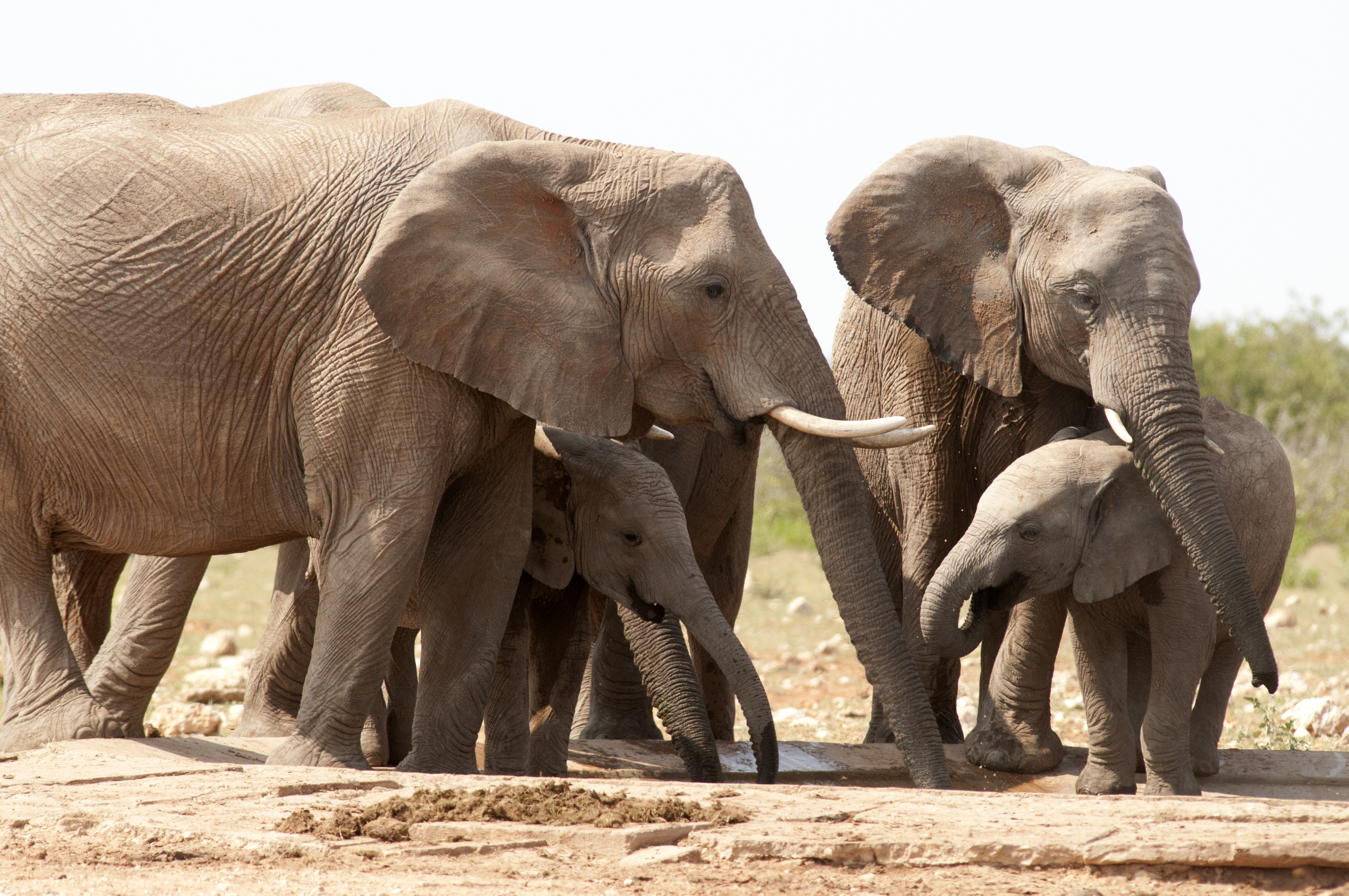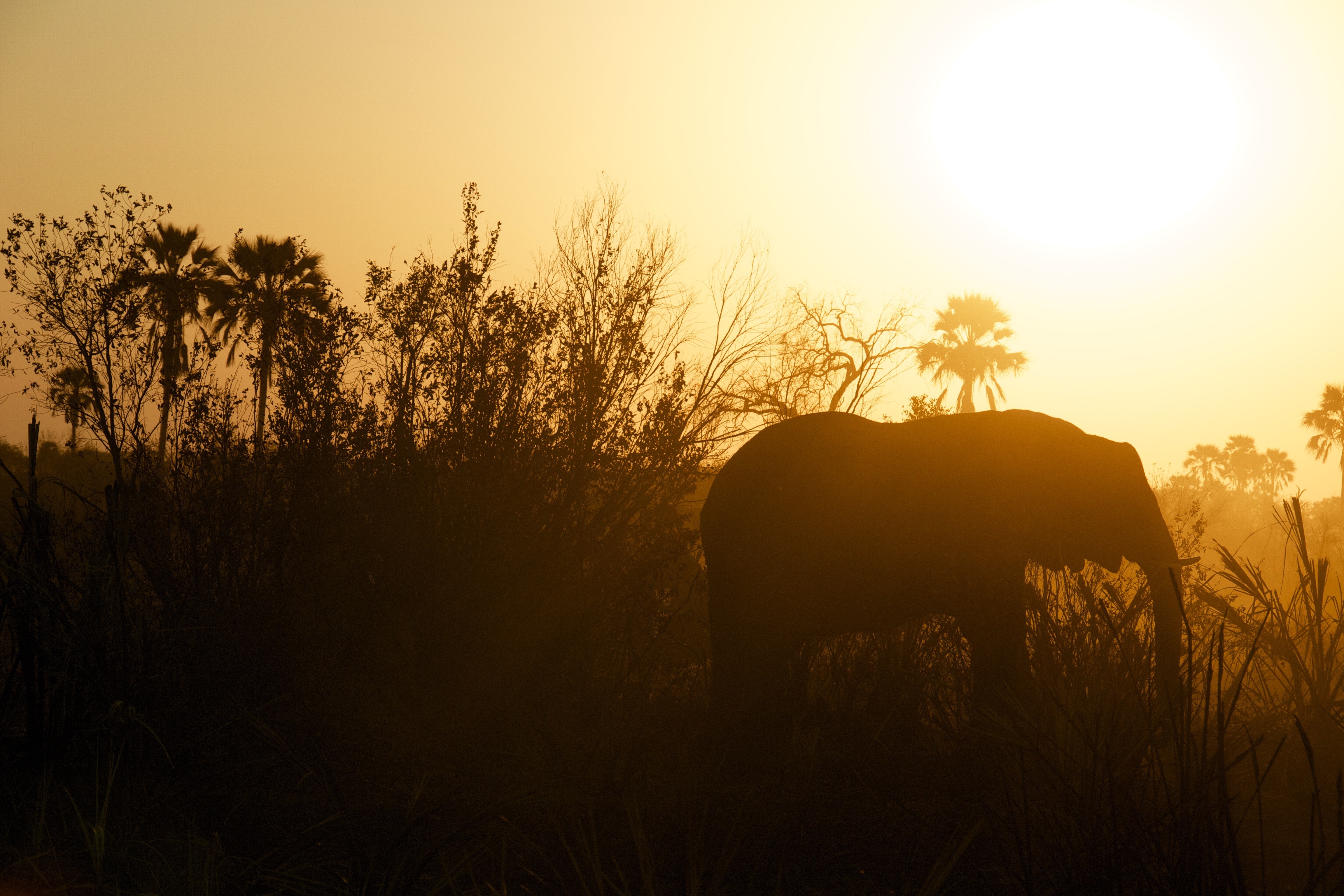Celebrating World Elephant Day
In 2012, filmmaker Patricia Sims launched World Elephant Day as a way to call attention to the plight of the dwindling global elephant population. Seven years later, #WorldElephantDay is a hashtag that annually exceeds billions of social media impressions and has become a gold standard for international social-awareness days.
Sims, who was in attendance at the launch of Earth’s Call in Aspen this past May, has been a tireless advocate for elephants and elephant-related issues. Earth's Call caught up with Sims from her home country of Canada — a country currently on the hot seat for its position on ivory — to discuss ethical tourism and how elephants actually help to fight climate change.

Earth's Call
Earth’s Call: How did World Elephant Day come to fruition?
World Elephant Day: We launched World Elephant Day from Bangkok, Thailand, on August 12, 2012. It was during the time that I was based in Thailand, and we were producing two documentaries about the issues threatening Asian elephants, one on a conservation program of the Elephant Reintroduction Foundation that returned captive elephants back to the wild in protected forest sanctuaries in Thailand.
During this time, the threats to the survival of elephants worldwide was escalating. The number of elephants being slaughtered in Africa for their ivory was in the thousands, there was an accelerating loss of habitat for elephants in Asian and Africa, and the exploitation and abuse of captive elephants in zoos, circuses, and tourism was increasing at an alarming rate. All of these issues were complex and diverse, varying from country to country. I believed we needed one day to focus the world’s attention on how quickly we were losing elephants, and that we had to come together across all sectors — from governments, to NGOs, to scientists, to corporations, to individuals — to stop the slaughter of elephants, their exploitation in captivity, and the destruction of their habitat.
That’s how World Elephant Day was born. It started as a grassroots initiative and has grown to become an annual day and global movement that brings the world together to help elephants and ignite action on the conservation solutions required to ensure their survival.
Earth’s Call: Why should ordinary citizens care about elephants?
World Elephant Day: Elephants are magnificent creatures that possess all of the qualities that we strive to have as humans — or should strive to have!
But more than all these admirable qualities which elephants have that we love, elephants are very important for the environment. As a keystone species, they have a job to do: they are care-takers of their habitats and maintain the health and biodiversity of those habitats as seed dispersers and geo-engineers.
Recent studies are showing that losing elephants could accelerate Earth’s climate crisis because elephants play a direct role in how forests are shaped and help to store carbon.

Creative Commons, Gautam Arora.
Earth’s Call: There are two primary species of elephants: the African elephant and the Asian elephant. What are the different challenges that both face?
World Elephant Day: The African elephants are primarily slaughtered for their ivory tusks, while Asian elephants have been more drastically impacted by habitat loss, and exploitation in captivity. But both African and Asian elephants are now experiencing even greater habitat encroachment, due to increasing human populations and development, which results in more occurrences of human-elephant conflict. That has dire consequences for both humans and elephants.
Earth’s Call: What are some key takeaways that we need to know about elephants?
World Elephant Day: Over the past 10 years, we have lost between 25,000 and 50,000 African elephants annually. That’s a reduction of 97% of the wild African elephant population over the last century. It’s estimated that there are less than 400,000 African elephants remaining.
For Asian elephants, it’s worse: There are less than 40,000 Asian elephants left worldwide, they are classified as an endangered species (IUCN Red List and CITES Appendix 1), and are more drastically impacted by habitat loss, having lost 95% of their natural range.

Creative Commons, Peter Prokosch.
Earth’s Call: World Elephant Day is focused this year on your home country of Canada, and its position on ivory. Can you explain a bit about what the issue is, and why Canadians should be alarmed?
World Elephant Day: Canada is one of the four remaining countries (the others are Japan, Namibia, and South Africa) that, as a signatory to CITES, still allows the domestic trade in elephant ivory. This year for World Elephant Day, I felt it was very important for us to take a stand on this issue — particularly since I am a Canadian and I have run many of the World Elephant Day campaigns from Canada. We formed the Ivory Free Canada Coalition, which comprises five organizations — Elephanatics; World Elephant Day; Global March for Elephants and Rhinos-Toronto; Humane Society International-Canada; and The Jane Goodall Institute of Canada.
We currently have a petition targeting 500,000 signatures to be presented to the Canadian Minister of Environment on World Elephant Day, requesting a national ban on elephant ivory sales. I believe most Canadians are shocked to learn that we have an active elephant-ivory trade in Canada, with more than 340 kgs of elephant tusks coming into the country in the past five years, and many sales of ivory carvings.
Earth’s Call: When it comes to ethical tourism, are there certain activities that travelers should avoid to help stop abuse of elephants?
World Elephant Day: Be Elephant Ethical (BEE) has been one of our World Elephant Day campaign monikers for the past three years. This is really targeted toward ethical elephant tourism. Travelers need to understand that elephants endure abuse in captive circumstances, and that as much as they wish to encounter elephants while traveling, there are the right ways to do that, which offer meaningful and educational experiences that are good for both humans and elephants.
We recommend not riding elephants; not supporting facilities that exploit elephants by performing tricks in a show ring; choosing to visit natural places where elephants are free-roaming and are cared for by skilled and caring “mahouts” (traditional elephant keepers) or rangers from local communities that support local economies; and when possible to see elephants in the wild in national parks or protected areas, where elephants can just naturally be themselves and are not having to service human interests.

Creative Commons, Yannick Beaudoin.
Earth’s Call: World Elephant Day has become a model for viral success. What secrets do you have about virality?
World Elephant Day: World Elephant Day has had extensive growth and engagement in social media since we launched it in 2012. We created the #WorldElephantDay hashtag and social media accounts during the time when social media was still relatively new and not the evolved marketing culture and advertising platform that it is today. The growth that World Elephant Day has attained since that time has been organic, which means that it has grown from the natural interest and curiosity of people who want to learn about elephants, share sentiments, and support elephant conservation and survival. World Elephant Day has become a conservation brand on behalf of the elephants. It’s that natural organic search and engagement that has created the level of reach, impact, and value that we see during the annual World Elephant Day campaign.
Earth’s Call: What can we, as ordinary citizens, do to help elephants, and help achieve UN SDG 15, Life on Land?
World Elephant Day: Following the UN SDG Life on Land objectives to me means that we have to respect natural resources and maintain contiguous habitats, wildlife corridors, and regions of uninterrupted habitat, which enable elephants — and other flora and fauna — to flourish, undisturbed by human degradation.
As I said earlier, elephants help to mitigate climate change and we have to protect them so that they can continue to do their natural job to maintain habitats. Human civilization and its greed-based development has violated the sacred energy centers and natural resources of the planet, impacting the interconnected relationships of animals and plants that keep the ecosystems healthy. We have to think about how we can give back to those ecosystems. It’s time to offer our reciprocity to nourish and maintain all life here on Earth. Isn’t that what our job here should be?
This article originally appeared on Earth's Call.

Creative Commons, Andy Brunner.


